2025.03.17
Luxury Sakura Dining in Tokyo: A Cherry Blossom Season Experience with an English-Speaking Chef
By Chef Yuuki Tanaka, owner of Ise Sueyoshi — Tripadvisor Best of the Best: Japan #1, World #12.(source).
What You’ll Learn in This Article
• Why cherry blossoms (sakura) hold deep cultural meaning in Japan
• The best time and places to enjoy sakura season in Tokyo
• How sakura inspires seasonal flavors in Japanese kaiseki cuisine
• What to expect from a cherry blossom-themed dining experience at Ise Sueyoshi
• Why dining with an English-speaking chef enhances cultural understanding
Discover Kaiseki Cuisine

Savor Sakura Beauty
– Experiencing the Full Bloom of Cherry Blossoms in Japan
Cherry blossoms symbolize Japan’s spring, embodying a fleeting beauty that makes their short blooming season all the more special. Japan is home to over 600 varieties of cherry blossoms, ranging from the early-blooming Kawazu Zakura to the late-blooming Yaezakura, each showcasing unique colors and petal structures. In Tokyo, the beloved Somei Yoshino reaches full bloom from late March to early April, transforming the city into a breathtaking sea of soft pink.
2025 Cherry Blossom Forecast
The cherry blossoms in Tokyo are predicted to begin blooming on March 24, 2025, with the peak viewing period likely falling between April 1st and April 8th. Since temperature and sunlight significantly impact blooming times, it’s recommended to check the latest weather updates before planning your trip.
To fully appreciate the beauty of cherry blossoms, timing and location are key. Viewing during the daytime allows you to enjoy their delicate hues under the bright blue sky, while nighttime illuminations bring a magical ambiance to the scene. Locations such as Chidorigafuchi and Meguro River offer stunning reflections of cherry blossoms on the water, creating an ethereal experience. Sakura festivals add to the festive atmosphere with traditional performances and seasonal food stalls.
When enjoying hanami (cherry blossom viewing), it’s important to observe local etiquette. Many popular spots require early morning reservations for picnic areas, and bringing a garbage bag is essential as visitors are expected to clean up after themselves. Respecting these customs enhances the experience, allowing everyone to immerse themselves in the transient beauty of Japan’s most cherished season.
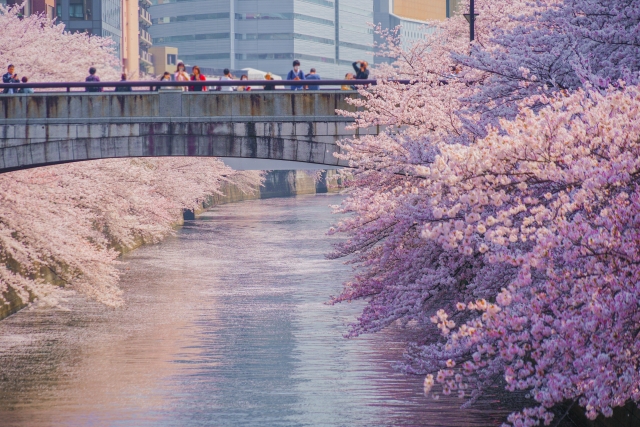
Hanami Culture
– The Deep-Rooted Tradition of Cherry Blossom Viewing
Hanami, or cherry blossom viewing, is a time-honored Japanese tradition where families and friends gather beneath blooming sakura trees to enjoy meals, conversations, and the fleeting beauty of nature. Dating back to the Heian period (794–1185), aristocrats would compose poetry under the blossoms, admiring their elegance while partaking in seasonal banquets. By the Edo period (1603–1868), hanami had spread to the common people, evolving into a nationwide celebration. Today, cherry blossom festivals are held across Japan, cementing hanami as a cultural symbol of renewal and appreciation for the passing seasons.
Why Are So Many Cherry Blossom Spots Located Along Rivers?
The abundance of cherry blossoms along rivers is no coincidence. Historically, sakura trees were planted along riverbanks to reinforce embankments.
During the Edo period, agriculture was the foundation of Japan’s economy, and flooding from heavy rainfall posed a serious threat to farmland and communities. While embankments were built to prevent floods, they were often washed away by repeated storms. Planting cherry trees along the riverbanks allowed their roots to strengthen the soil, preventing erosion.
Additionally, the annual hanami gatherings meant that large crowds would gather, naturally compacting the ground, further reinforcing the embankments. What began as a practical flood prevention measure eventually transformed into picturesque cherry blossom avenues, drawing visitors from across the country every spring.
Cherry blossoms and food have always been deeply intertwined. From sakura-themed bento boxes to hanami dango (sweet rice dumplings) and sakura sake, these seasonal delicacies enhance the enjoyment of cherry blossom viewing. For those seeking a more refined culinary experience, kaiseki cuisine offers a sophisticated way to celebrate the beauty of spring through meticulously crafted dishes that reflect the season’s essence.

Sakura Dining
– The Art of Savoring Cherry Blossoms Through Cuisine
In Japan, cherry blossoms are not only admired visually but also enjoyed as part of the culinary experience. Sakura flowers and leaves are often preserved in salt, adding a delicate fragrance and subtle flavor to various dishes. Sakurayu (cherry blossom tea), where salted blossoms unfold in hot water, is traditionally served at celebratory occasions, while sakuramochi—a sweet rice cake wrapped in a salted cherry leaf—is a beloved springtime confection.
The charm of sakura-themed cuisine lies in its delicate colors and refined flavors. Pale pink, fresh green, and soft yellow hues evoke the essence of spring, creating visually stunning dishes. In Japanese cuisine, presentation is just as important as taste, making sakura-infused dishes a feast for the eyes as well.
At Ise Sueyoshi, we offer a special Sakura Kaiseki menu, designed to celebrate the season’s beauty. Each dish highlights the subtle fragrance and delicate colors of cherry blossoms, transforming a meal into a sensory journey through Japan’s most enchanting season. After admiring the splendor of blooming sakura, why not complete your experience with a luxurious seasonal kaiseki meal that embodies the spirit of spring?

Seasonal Kaiseki Art
– The Elegance of Japan’s Four Seasons Through Cuisine
Kaiseki cuisine is more than just a meal—it is an artistic expression of Japan’s four seasons. Rooted in tradition, kaiseki is guided by the principles of seasonality, respect for ingredients, and balance (gomi, goshoku, goho – the five flavors, five colors, and five preparation methods). These elements harmonize to create dishes that reflect the natural beauty of the moment.
In spring, kaiseki dishes often incorporate sakura, not just as an ingredient but as a motif woven into the entire dining experience. Delicacies such as cherry leaf-wrapped grilled fish or a clear broth infused with cherry blossoms allow guests to see, smell, and taste the essence of spring.
Unlike Western fine dining, which often focuses on intricate techniques and luxurious ingredients, Japanese kaiseki emphasizes harmony with nature. The preparation is delicate, enhancing rather than overpowering the natural flavors of seasonal ingredients. Each dish follows a carefully curated sequence, creating a multi-sensory journey that evolves with every course.
At Ise Sueyoshi, every aspect of kaiseki—from the selection of seasonal ingredients to the choice of handcrafted ceramic tableware—is designed to evoke the essence of Japan’s four seasons. Experience the art of seasonal dining and immerse yourself in the beauty of spring through every bite.
Read more: What is Kaiseki cuisine?

Kaiseki at Ise Sueyoshi
– The Art of Sakura Kaiseki
At Ise Sueyoshi, we believe that kaiseki cuisine should be an immersive experience, allowing guests to feel the passage of the seasons through each dish. In spring, our special Sakura Kaiseki menu is designed to capture the fleeting beauty of cherry blossoms—not just through ingredients but in the presentation, aroma, and overall ambiance of the meal.
🌸 A Glimpse into Ise Sueyoshi’s Sakura Kaiseki 🌸
- Appetizer: Sakura-inspired delicacies featuring cherry shrimp, sakura sea bream, and a light cherry blossom-infused jelly
- Hassun (Seasonal Platter): A hanami-themed selection arranged like a miniature picnic box, with delicate butterfly-shaped root vegetables symbolizing spring renewal.
- Simmered Dish: Ise lobster with green pea sauce, representing new greenery and spring blossoms.
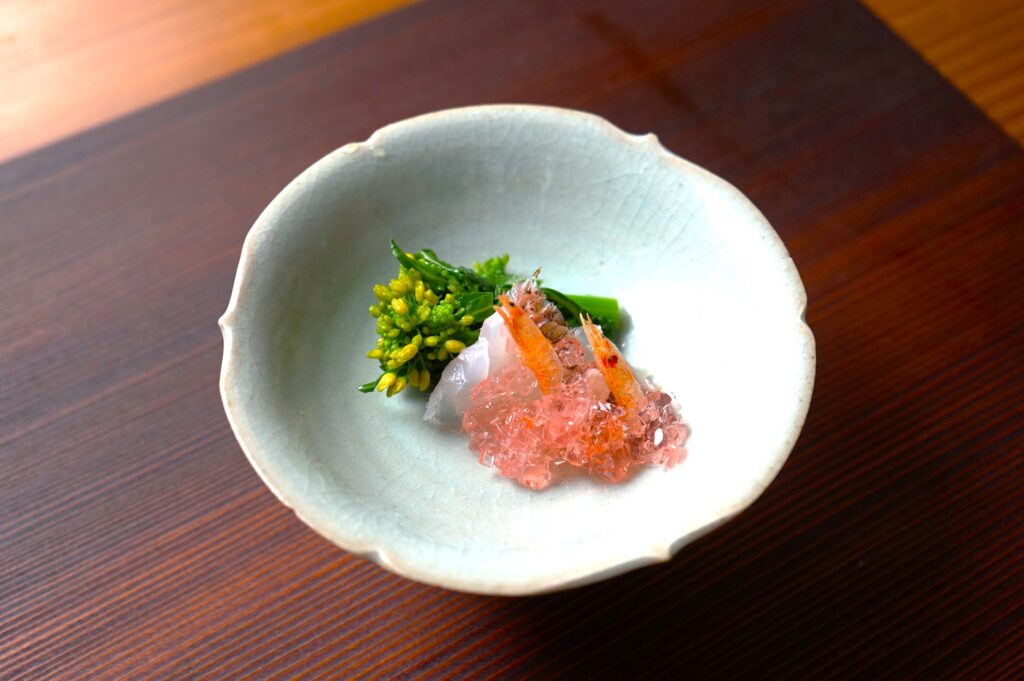

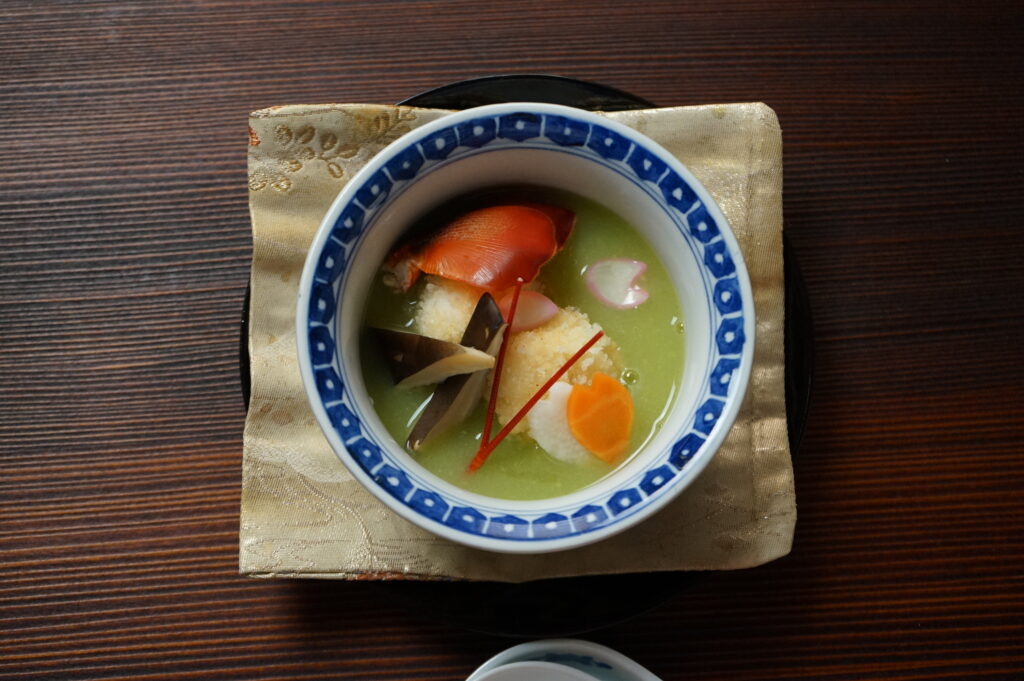
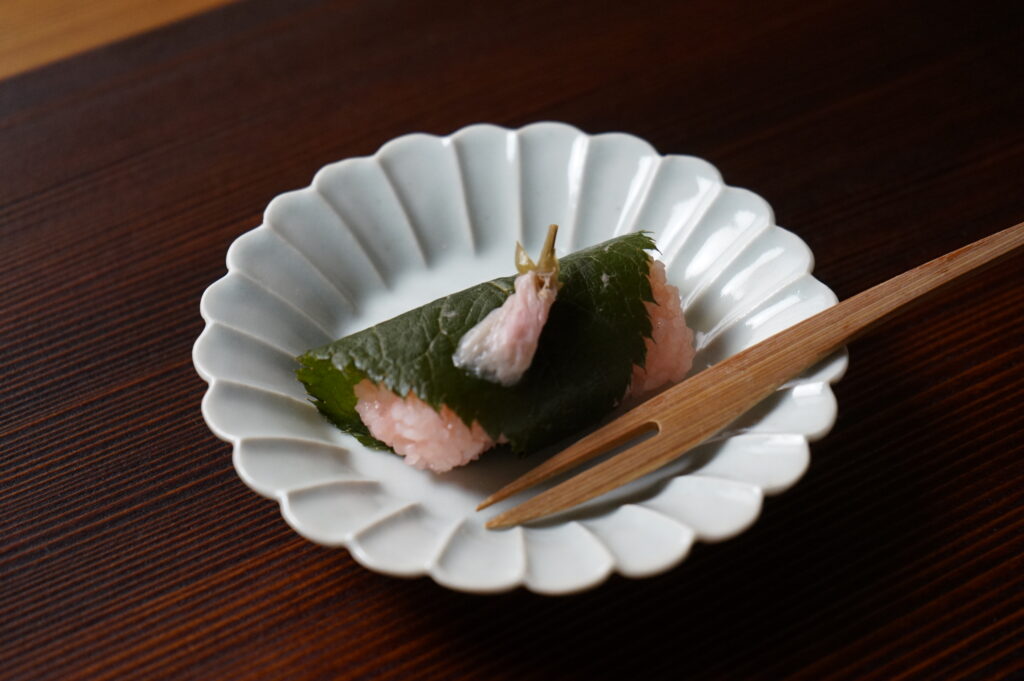
At Ise Sueyoshi, we don’t just use cherry blossoms as an ingredient—we recreate the essence of a spring landscape through food. Our Hassun course features floral and butterfly motifs, while the simmered dish mirrors the vibrancy of fresh greenery. The appetizer of sakura sea bream is lightly salted with cherry leaves, releasing a subtle aroma when eaten.
Our chef’s philosophy when crafting the Sakura Kaiseki is to focus on fragrance. Spring cuisine is delicate, requiring the right balance of floral notes to evoke the natural elegance of cherry blossoms. We invite you to experience this seasonal harmony at Ise Sueyoshi, where every dish tells a story of Japan’s most beloved season.
Plant-Based Options
– A Thoughtfully Crafted Vegan Kaiseki Experience
Kaiseki cuisine is deeply rooted in seasonal purity, making it naturally adaptable to plant-based dining. In Japan, the tradition of shojin ryori (Buddhist vegetarian cuisine) has long emphasized simple yet refined plant-based dishes. However, at Ise Sueyoshi, we take a different approach: rather than offering “shojin ryori,” we present vegan kaiseki as an elevated culinary experience.
Our Vegan Kaiseki is not a substitute meal—it is a meticulously crafted, full-fledged kaiseki course that upholds the artistry of traditional Japanese dining. This menu is designed not only for those with dietary restrictions but also for those celebrating special occasions such as birthdays, anniversaries, or honeymoons.
🌱 Highlights from Ise Sueyoshi’s Vegan Kaiseki 🌱
- Broth: A deeply umami-rich dashi made from kombu and dried shiitake, without fish-based ingredients.
- Grilled Dish: Spring vegetables with a delicate sakura miso glaze.
- Simmered Dish: Seasonal mountain vegetables, slow-cooked to enhance their natural flavors.
Our goal is to ensure that every guest, regardless of dietary needs, can experience the depth and sophistication of kaiseki. At Ise Sueyoshi, we don’t compromise on quality—we enhance it through innovation and respect for natural flavors.
For more about our vegan and gluten-free philosophy, please visit this page.
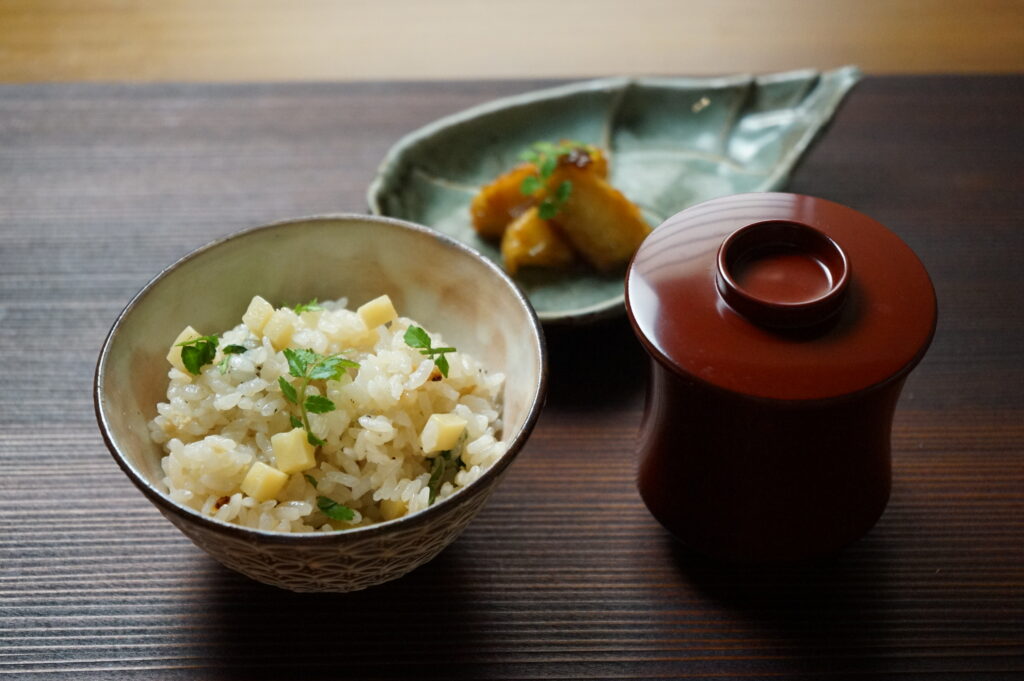
Chef’s Philosophy
– The Soul Behind Ise Sueyoshi’s Kaiseki Cuisine
For Chef Yuuki Tanaka, kaiseki is more than seasonal dining—it is a cultural expression that tells a story through food.
At Ise Sueyoshi, we do not simply “use seasonal ingredients”—we translate the spirit of the season into our dishes. Spring represents renewal and transience, which we express through delicate sakura flavors, floral motifs, and light, fragrant broths. Summer embodies vibrancy and coolness, while autumn reflects harvest and nostalgia, and winter conveys quiet elegance. Every course is carefully designed to reflect these seasonal sentiments.
One of the core pillars of Chef Tanaka’s culinary philosophy is the direct connection with producers. He personally visits farms and fisheries in his hometown of Mie Prefecture, ensuring that every ingredient comes from trusted hands.
More than just sourcing quality ingredients, he believes in “emotional distribution”—a philosophy where the stories and passion of the producers are conveyed to the guests. In return, the appreciation and feedback from guests are shared with the producers, creating a cycle of mutual respect and connection.
Dining at Ise Sueyoshi is not just about enjoying food—it is about experiencing the essence of Japan’s rich culinary heritage.
Read More about Chef Yuuki
The Story of Tokyo’s Best Chef, Yuuki Tanaka: Bringing the Blessings of His Hometown to the World
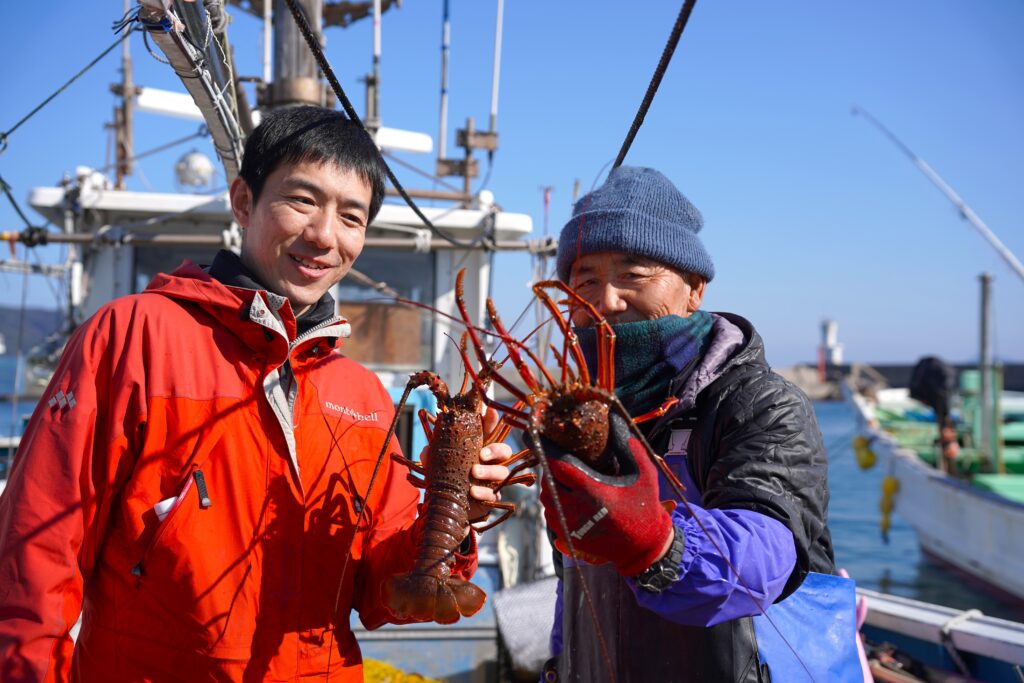
Private Dining
– A Tranquil and Intimate Dining Experience
Despite being located in the heart of Roppongi, Ise Sueyoshi offers an escape from the city’s fast-paced energy. Here, guests are welcomed into a serene, reservation-only dining space, ensuring a truly private and personal experience.
The restaurant features:
- A private dining room (up to 5 guests) for intimate gatherings.
- A chef’s counter (up to 5 guests) where guests can engage in direct conversation with Chef Tanaka while watching the artistry of kaiseki preparation unfold.
Whether you are celebrating a special occasion, enjoying a romantic evening, or hosting a VIP guest, the exclusivity of Ise Sueyoshi elevates every meal into a once-in-a-lifetime experience.
A Rare Opportunity for Foreign Guests
Unlike many traditional kaiseki restaurants, Ise Sueyoshi offers full English-language service. Chef Tanaka personally explains each dish, providing insight into Japanese culinary traditions, ingredient selection, and cultural significance.
This level of direct communication is exceptionally rare in Japan, making Ise Sueyoshi an unmissable experience for international guests looking to explore the depths of Japanese cuisine beyond just flavor.
An Invitation to Experience Japan Through Kaiseki
At Ise Sueyoshi, we believe that kaiseki is a journey—one that connects people, history, and nature.
Escape the noise of the city and immerse yourself in an exclusive dining experience where every detail has been meticulously curated to honor the essence of the season.
Book your once-in-a-lifetime kaiseki experience today, and discover why Ise Sueyoshi is Tokyo’s hidden gem for luxury sakura dining.
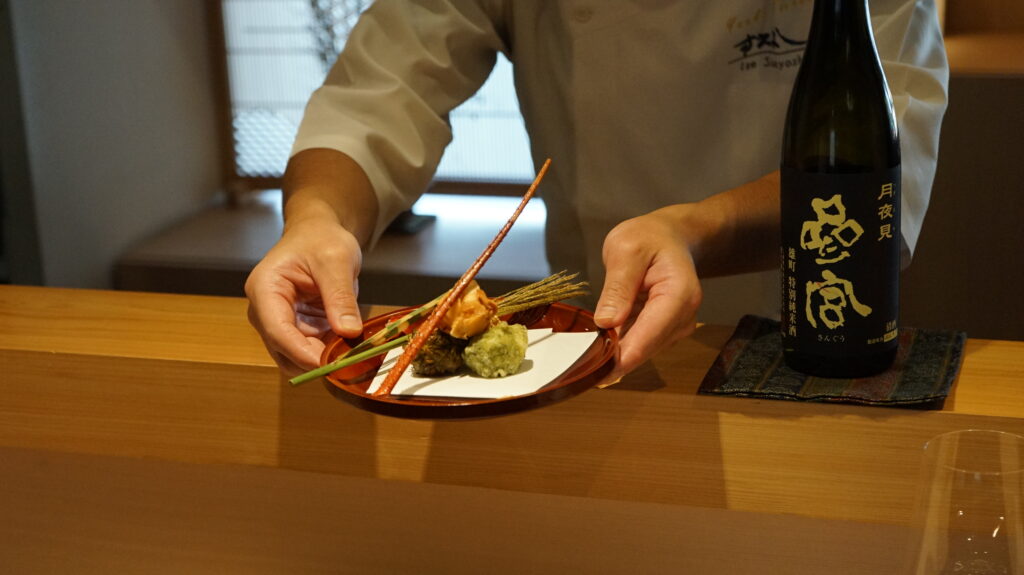
Traditional Japanese Food at its finest
Apr 2016 • couples
On our first night of our 2 week trip, we decided to visit this little secret treasure hidden in Tokyo. The hostess (Mary) greeted us from outside the restaurant and escorted us in. We were then welcomed by the chef (Yuuki). It is a small restaurant where you get the opportunity to see Yuuki prepare your meals in front of you. Not knowing anything about Kaiseki dining, Mary provided us information about what the experience is and what each dish represents. Both Mary and Yuuki spoke english which was good for any language issues. Each dish that came out showed how much love and care Yuuki took in his work and it tasted delicious. The menu changes due to seasons. Since we went during sakura season, they used some sakura in the ingredients which was cool. To top the night, me and my partner were celebrating our engagement that day so Yuuki and Mary were kind enough to help us celebrate our day with some traditional Japanese customs for celebrations. Overall we enjoy the food, the experience and the hospitality of Yuuki and Mary. If you are looking for true traditional japanese food, this is the place to go. Many thanks to Yuuki and Mary for helping celebrate our engagement and start our trip off with a bang!
Why Guests Keep Coming Back
At Ise Sueyoshi, we carefully remember each guest’s preferences to offer an even more personalized experience on their next visit. This thoughtful attention to detail has earned us many loyal repeat guests.
For international visitors eager to explore Japanese culture, dining at Ise Sueyoshi is more than just a meal—it’s an immersive journey into tradition and refined aesthetics. This unique and meaningful experience is one of the reasons why so many guests choose to return.
We are proud to continue delivering an exceptional dining experience that earned us the Tripadvisor Travelers’ Choice Best of the Best 2024 award, ranking among the Best Restaurants in Tokyo. Our commitment to excellence in service and our dedication to offering the finest kaiseki dining experience in Tokyo remain unwavering. Discover more about our journey to becoming one of the best restaurants in the city[here].

Visit Ise Sueyoshi
Location: Conveniently located 12 minutes from Roppongi Station and 8 minutes from Hiroo Station.
Hours: Open 5:00 PM – 10:00 PM, reservations only. Closed on Sundays and Mondays.
Book Your Experience ☟
Conclusion
At Ise Sueyoshi, we humbly invite you to experience a dining journey that caters to all dietary needs. Whether you’re vegan, halal, or have specific preferences, we are here to create a memorable and inclusive dining experience for you, especially for special occasions like a honeymoon.
Looking ahead to 2025, we promise to continue striving as the “Best Kaiseki Restaurant,” delivering unique culinary experiences that reflect the beauty and depth of Japanese culture. Reservations are now open through the end of 2025. We encourage you to plan early and join us for a special dining experience. May our dishes and hospitality create cherished memories for your journey.
Recommended Blog Posts
On our blog, we offer further insights into Tokyo’s rich food culture and the unique culinary experiences we provide at Ise Sueyoshi. Be sure to check out these recommended posts:
Hanami in Japan: Cherry Blossoms or Plum Blossoms?
@isesueyoshi
o 🏆 Awarded the prestigious Best Luxury Restaurant by TripAdvisor
o 🌍 Ranked 2nd worldwide, 1st in Japan, and 1st in Asia
o ⭐ Google rating of 4.9 (as of 2024)
o ✅ Vegan-friendly
o ✅ Halal selections
o ✅ Gluten-free options
o ✅ Vegetarian delights
o ✅ Pork-free choices
o ✅ Perfect for pescatarians
o 🌈 Welcoming and inclusive environment for LGBTQ guests
o 🚃 Just a 12-minute walk from Roppongi Station or 8-minutes from Hiroo Station
o ⏰ 5:00 PM – 10:00 PM (reservations-only)
o 📅 Closed on Sun and Mon

